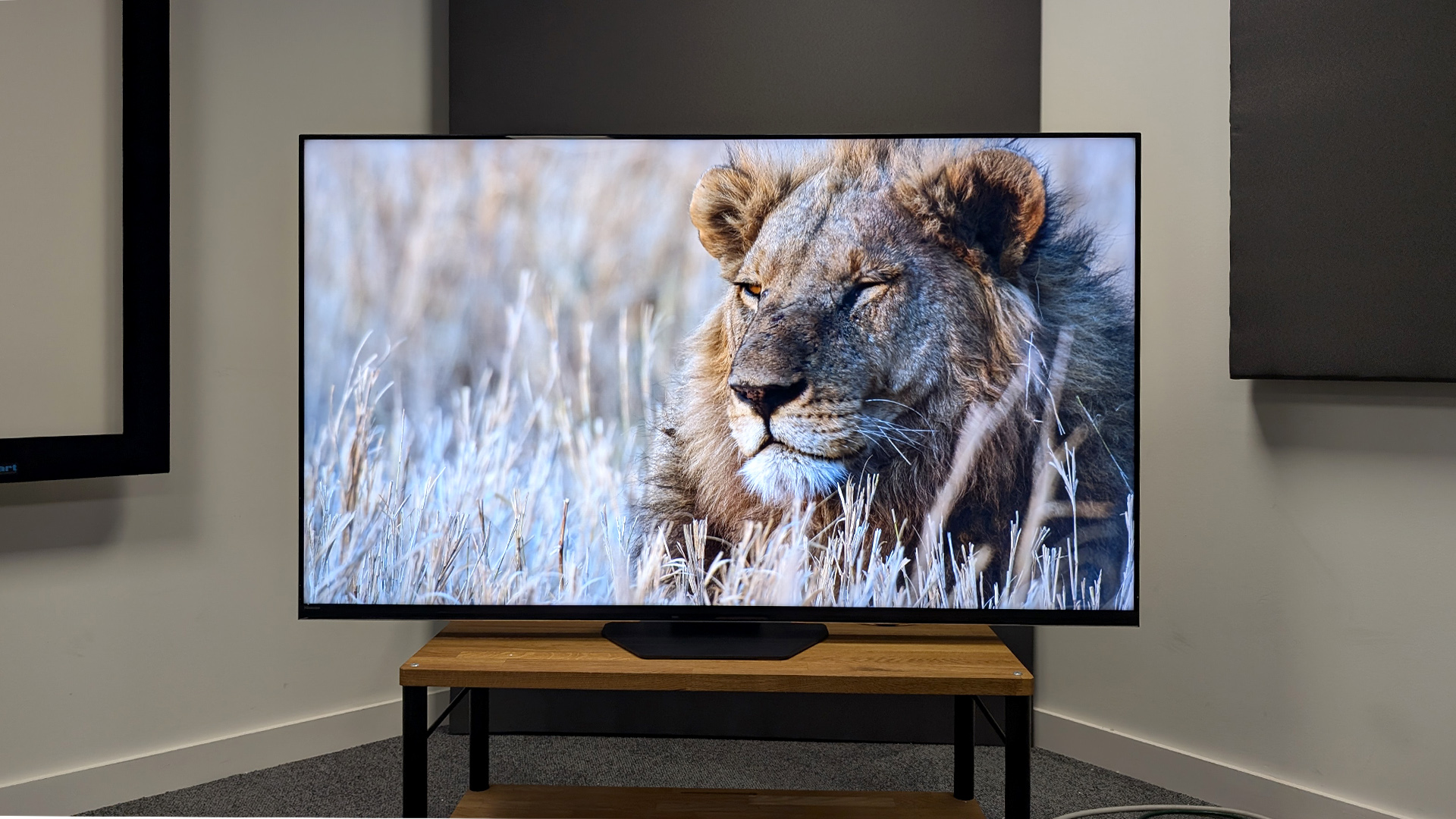What Hi-Fi? Verdict
Compared to many Mini LED sets the U8N is a good choice, but its price puts it in competition with more accomplished five-star OLEDs
Pros
- +
Fantastic upscaling
- +
Balanced picture once set up right
- +
Solid gaming specs, even for PC owners
Cons
- -
Needs careful set-up for best results
- -
Only two HDMI 2.1 inputs
- -
Audio is average
Why you can trust What Hi-Fi?
The U8N is Hisense's latest pitch to prove Mini LED is a valid alternative to OLED for serious movie fans and gamers looking for the best home cinema experience possible.
To help with this effort are a wealth of upgrades designed to fix our biggest issues with the older Hisense U8K, which hinted at greatness when we tested it last year. But, with many brands including Samsung and Sony having already tried and failed to achieve this goal with more expensive flagship sets, can Hisense succeed?
For the most part yes, as the U8N proved to be a big step forward for the brand’s ULED (Mini LED) offering when we tested it in our dedicated viewing rooms. If you want a great value, top end Mini LED TV and for whatever reason are dead set against getting an OLED, then the U8N is well worth considering – but be warned, it’s still not quite perfect.
Price
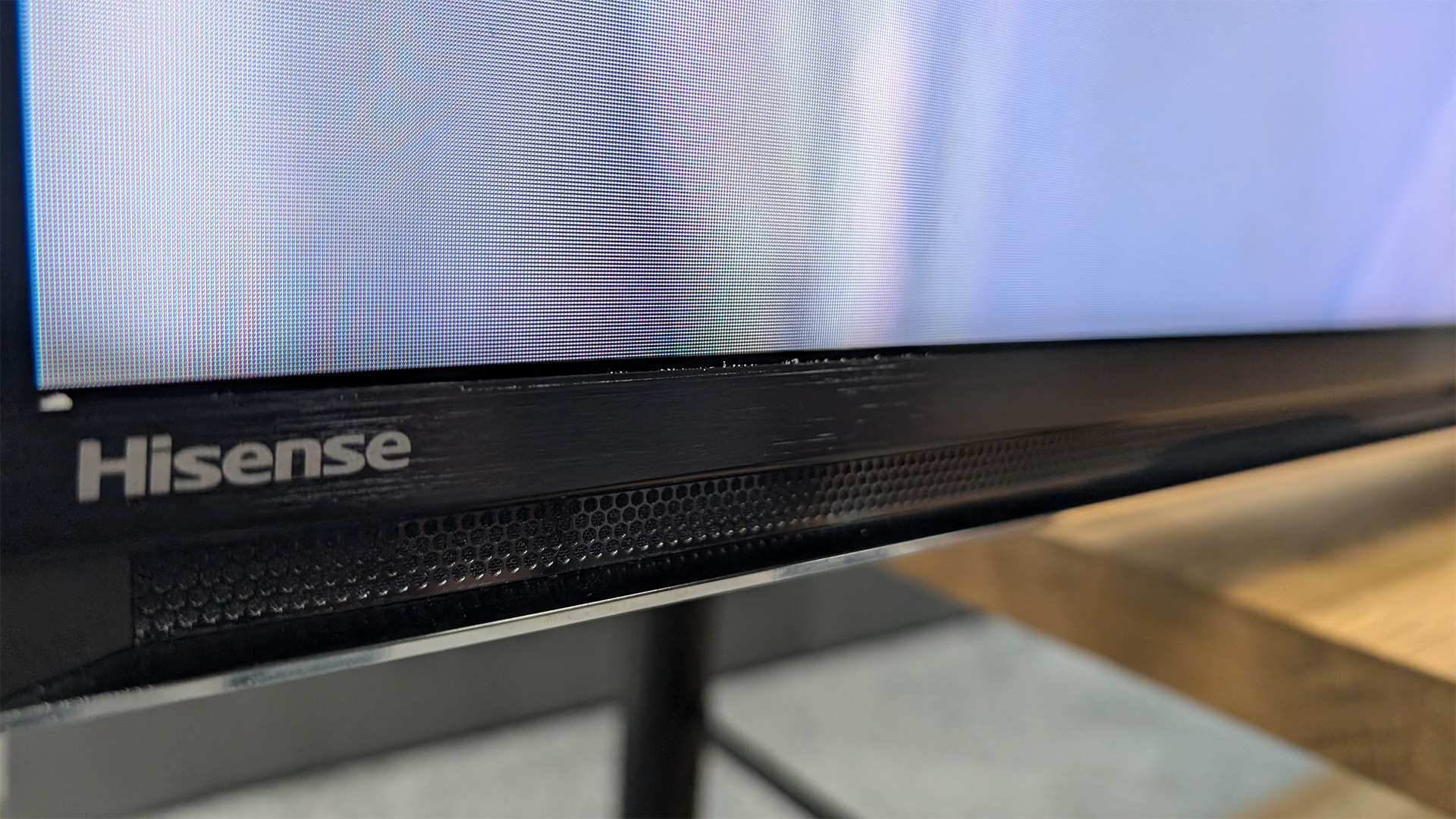
Globally the Hisense U8N is available in 55-, 65-, 75-, 85- and 100-inch sizes. But in the UK you can only buy the 65- and 75-inch options.
The U8N is the third most expensive option in Hisense’s 2024 Mini LED lineup, sitting beneath the more premium Hisense U9N and the 2024 version of the Hisense UX.
Prices are already fluctuating but in most stores you can grab the 65-inch model we’re reviewing for £1800 / $1500 / AU$2699 at the time of writing. That puts it slightly below Mini LED rivals such as the Samsung QN90D, which currently sells for a slightly higher £2200 / $2400 / AU$4000. It’s also well below the flagship Mini LED sets of other brands, including the 65-inch Samsung QN95D we reviewed earlier this year, which sells for around £2600 / $3300 (around AU$5040).
The 75-inch option’s price is also slightly below that of rivals, with it retailing for £2400 / $2000 – a big drop on the £4499 / $4000 / AU$6995 the 75-inch Sony Bravia 9 retails for. If you’re lucky enough to be in the US where more sizes are available, pricing remains incredibly competitive, with the 55-inch model selling for $1100 and the 85-inch for an incredibly reasonable $2800.
So as premium Mini LED sets go, it is cheaper than most of its competitors. The only spanner in the works is that, thanks to recent price drops, you can now get a step down OLED TV for only a few hundred more, including the recently reviewed LG C4 and last year's Award-winning Sony A80L.
Design
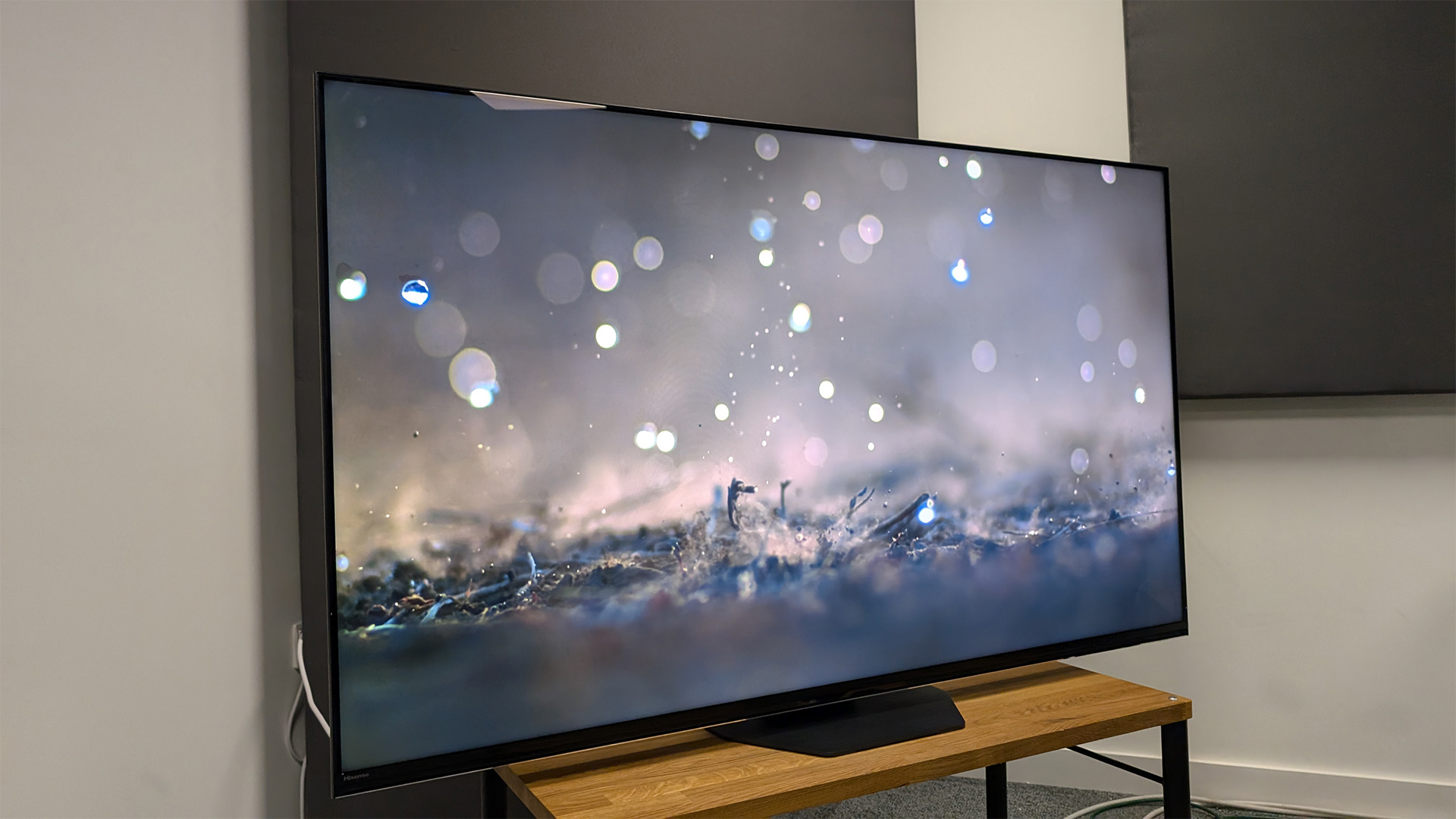
The moment we unbox the U8N in our viewing rooms, it is apparent how much work Hisense has done developing its design. The TV looks very different to its predecessor. For starters the previous model’s soundbar-sized bottom speaker has been reduced in size to more of a thin grille.
Set to its top height this means there’s enough space to comfortably fit a regular sized soundbar underneath it. The U8N’s stand has also been tweaked and now feels incredibly well made and durable. The unit offers no flex or movement even when the TV is moved. The added heft is a good thing, as the TV is incredibly heavy and indicative of the U8N’s overall robust build quality.
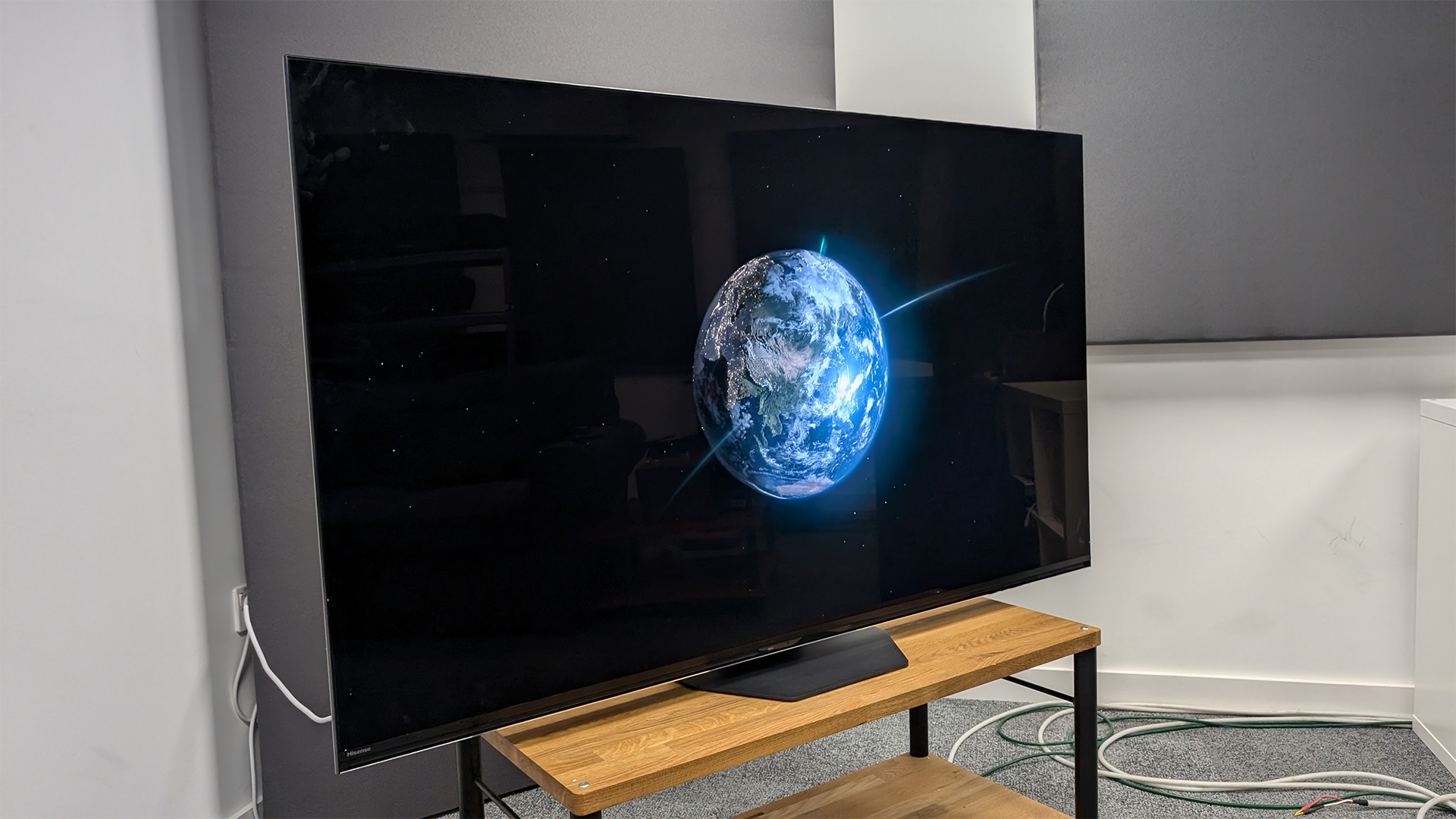
Screen size 65-inches (also available in 55-inches, 75-inches, 85-inches and 100-inches)
Type ULED
Backlight Mini LED
Resolution 4K
HDR formats HLG, HDR10, HDR10+, Dolby Vision
Operating system VIDAA (UK and Australia), Google TV (US)
HDMI Inputs 4 x (2 x 48Gbps HDMI 2.1)
Gaming features 4K/120Hz, 4K/144Hz, VRR, ALLM, Dolby Vision game mode
ARC/eARC eARC
Optical output? Yes
Dimensions (hwd, without stand) 84 x 150 x 5.7cm
The only downside is that the stand doesn’t have a swivel mechanism, which means you can’t easily adjust the screen’s angle and get quick access to its ports without moving the entire TV – this is a minor annoyance as, based on our experience lugging it around our viewing rooms, picking it up and moving it is a two person job.
The back of the TV has also had work. Though it’s still built of plastic, the unit feels more rugged and generally better built than the U8K, which feels slightly cheap by comparison. The back also shows the sub and upward firing channels for its in-built 2.1.2 speaker system which supports DTS:X, IMAX DTS and Dolby Atmos formats.
The remote is fairly chunky by today’s standards, being longer and slightly thicker than the svelte unit you’ll find with the Sony Bravia 9 and the dinky but plasticky, LG C4 control. There is a good reason for this, however. Specifically, there’s a giant solar charging panel on the bottom of its top face which lets the remote top up its battery with light.
While this may not be as useful to some of our cinephile readers, who watch movies in pitch black, light controlled conditions, for most people it’s a very nice touch, especially as the control is otherwise great from a functionality standpoint. As well as featuring backlighting, a staple feature all remotes should have, it has quick and easy controls for access to all major streaming services, as well as an intuitive layout.
Features
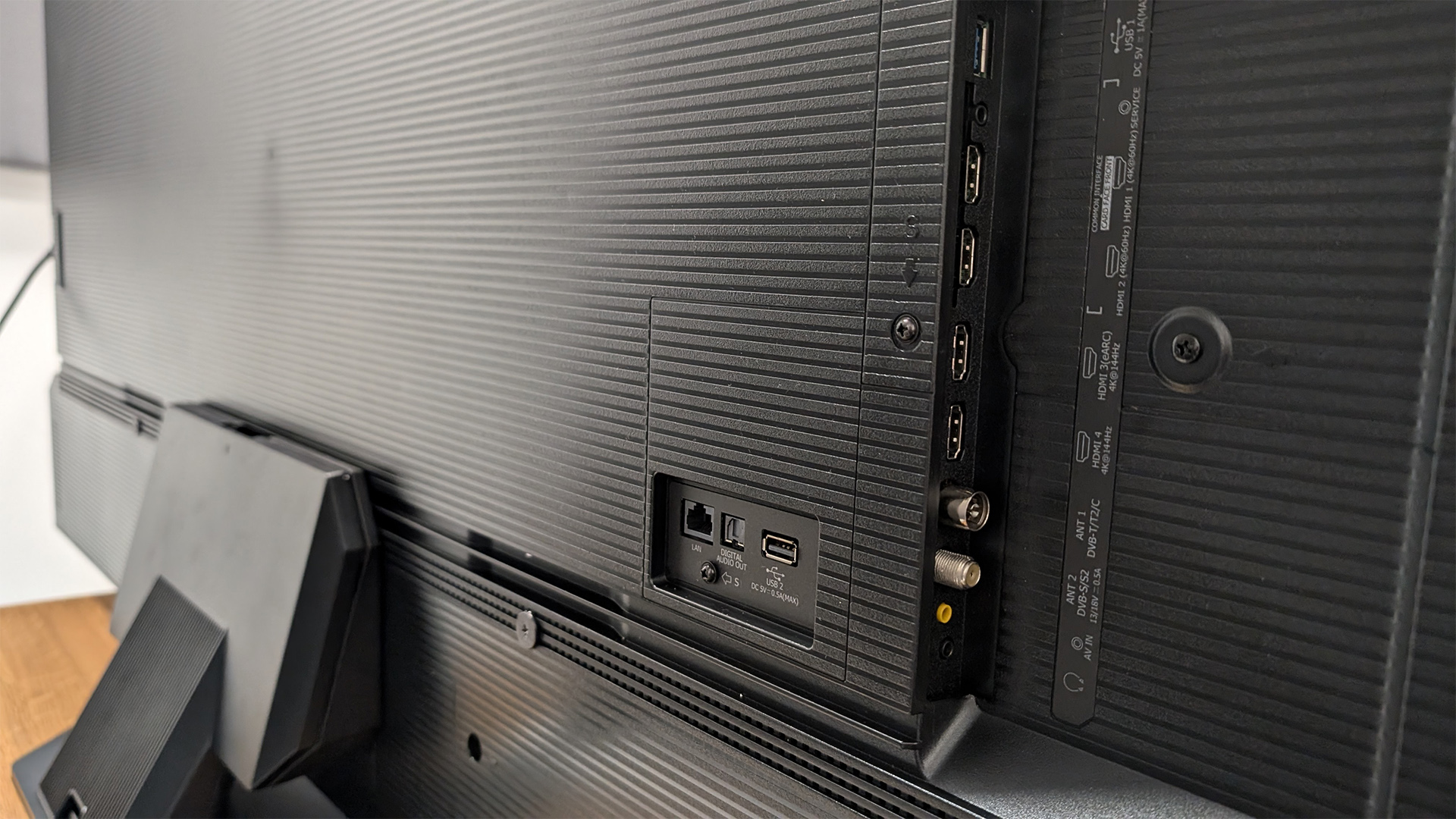
For a Mini-LED TV the Hisense U8N is fairly well stacked, features-wise, and matches if not beats many of the rival sets you’ll find in its class.
Starting with the most important part, the TV features a 4K VA-panel with Quantum Dot tech and Mini LED backlighting. Hisense often refers to this as ULED. These are all familiar terms, but there are a few key upgrades differentiating it from last year’s Hisense U8K.
For starters the 65-inch model we’re testing has 1600 dimming zones and can produce a claimed 3000 nits of peak brightness. By comparison the U8K had 1008 dimming zones and a 1500 nit peak brightness. Those are pretty huge year-on-year improvements that aren’t to be sniffed at.
The increased number of dimming zones and higher peak brightness mean it should be capable of much stronger contrast without Mini LED’s traditional blooming issue – where there are light 'spills' into darker sections of the picture. This is aided by the TV’s use of a custom Hi View Pro image processor, which Hisense claims offers significantly more advanced local dimming control than rivals.
The only downside is that, as a heavily customised version of the quad-core MediaTek MT9618 Pentonic 700, the Hi View Pro still only supports two full speed 48Gbps, HDMI 2.1 inputs, one of which doubles as an eARC. So people with multiple games consoles and/or a PC who also want to attach a Dolby Atmos soundbar, will have to contend with a fair amount of cable swapping.
Outside of this, gaming support is solid. The U8H is also one of a growing number of TVs to offer a 4K/144Hz refresh rate for PC gamers – though it is limited to 4K/120Hz with Dolby Vision gaming. The higher refresh rate is a key metric that increases the number of images per second the TV can render. The higher the refresh rate, the more fluid and responsive the game experience should be.
The game bar seen on previous Hisense sets also makes a return, which is a blessing in that it makes it quick and easy to tweak and activate the set’s game related features on the fly.
Dolby Vision gaming is one of many HDR standards the Hisense U8N supports. Other supported formats include HDR10, HLG and HDR10+, as well as Dolby Vision IQ and HDR10+ Adaptive. Those last two are offshoots of the main versions that aim to automatically respond and adapt the TV to the lighting conditions in the room.
Finally, the set also supports IMAX Enhanced content, which you will find on Disney+ and a very limited number of 4K Blu-rays. So whatever your HDR poison of choice, the U8N has you covered.
In the US, the U8N runs using the Google TV operating system, but our review unit is a UK model that runs Hisense’s own VIDAA U7.6 software. Despite being less well known, the VIDAA system works fairly well. The UI is intuitive to use, though the giant ad bar at the top (something that has become all too common with modern TVs) is an annoyance.
The software features apps for all the standard streaming services, including Netflix, Disney+ and Prime Video, which play in 4K with Dolby Vision or HDR10+ as required. Local support is also solid, with it featuring a Freely tuner and apps for BBC iPlayer, ITVX, Channel 4 and My5. The only downside is that there’s a shortage of cloud gaming services, including SteamLink and Nvidia GeForce Now, which are both on LG’s rival webOS.
Picture
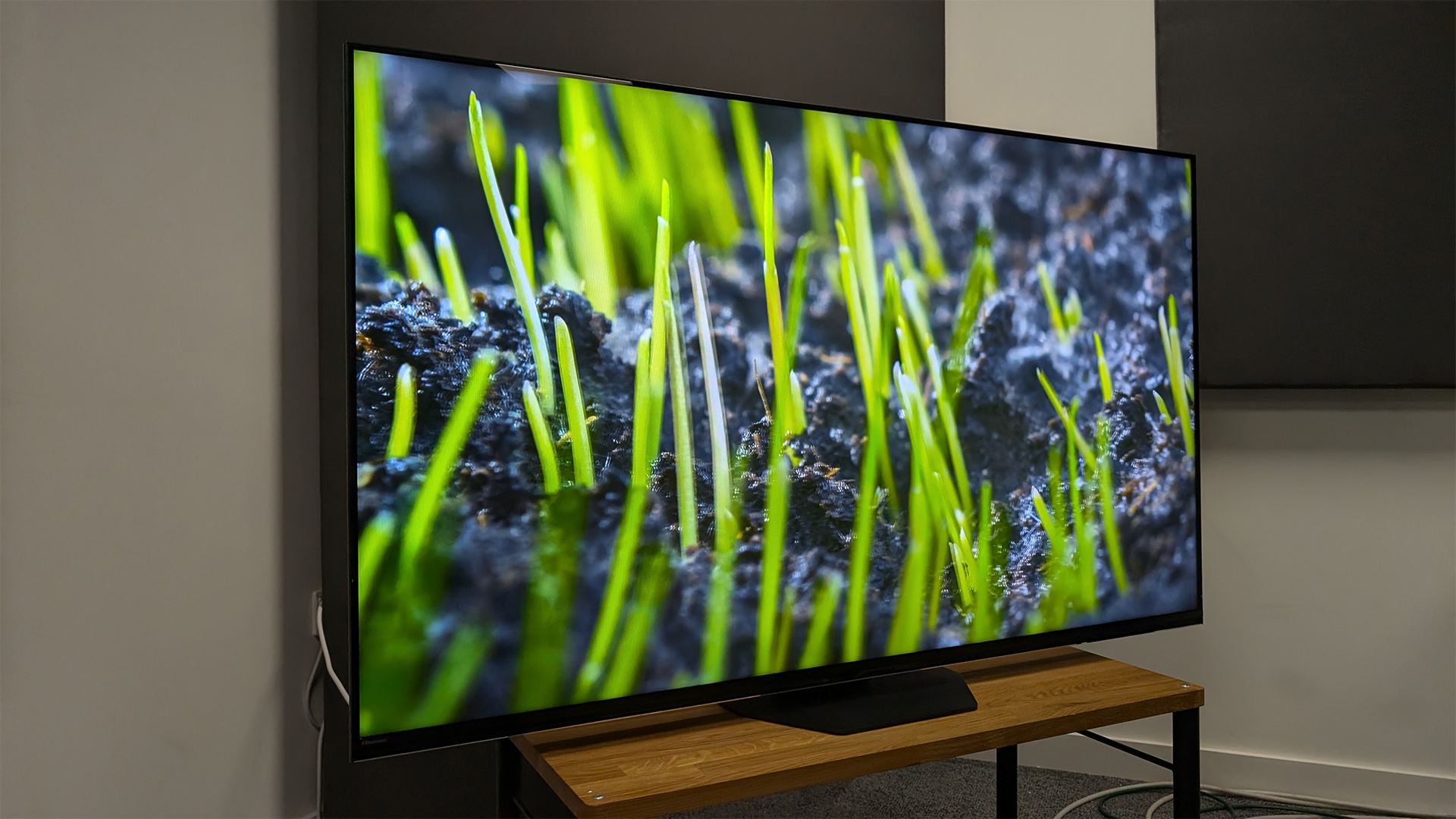
The first question we’re always asked when recommending a TV is “how good is the picture?” Here the answer is that it's good by Mini LED standards, if you take the time to set the Hisense U8N up properly.
Out of the box, the TV’s HDR Standard mode is clearly designed to showcase the U8N’s high max brightness. Playing Top Gun: Maverick’s opening scene, the sea glitters and has definite pop, but the overbaked colours and contrast have an artificial feel. Motion handling also feels extreme, with planes and ground crew’s movements not looking as natural as we’d like. Peak bright areas also lack detail as the setting cranks the contrast to the point they’re washed out and just show up as white.
Switching to Filmmaker mode, the picture becomes much more subtle, with motions looking realistic and colours taking on a much more neutral, accurate tone. However, untouched blacks are noticeably grey, even by Mini LED standards. The bright sections of the picture are subdued too, to the point where it feels a little too controlled, leading to a dull, slightly flat picture. Skin tones in particular lack the contrast and oomph needed to deliver the three-dimensionality you’d expect from a TV this price.
Going into the settings we find the best results come when you tweak the Filmmaker mode. Specifically, we get the best results with the TV’s Local Dimming setting in High, Adaptive Contrast in Low, motion processing in Film mode and the Colour Profile set to Warm 2 – which bizarrely helps improve the black level compared to the distinctly grey Warm 1 option (we suspect this might be a software bug).
Once that's done, the U8N delivers solid results. Black levels are deeper but they retain detail, and skin tones are significantly improved, with there being a wider range of colours between the darkest and lightest parts of Maverick’s skin.
Moving to our BladeRunner 2049 test disc, results are similar, though some minor issues persist – many of which are common to all the recent Mini LED sets we’ve tested. Blacks don’t match the levels of OLED sets, including the A80L we tested it against. Colours aren’t as vibrant, with the yellows and reds of Dave Bautista’s farming hazmat suit looking good, but not as rich on the U8N. Minor motion handling issues erupt during the drone scene, where a short 'blink and you’ll miss it' ghost frame sneaks in.
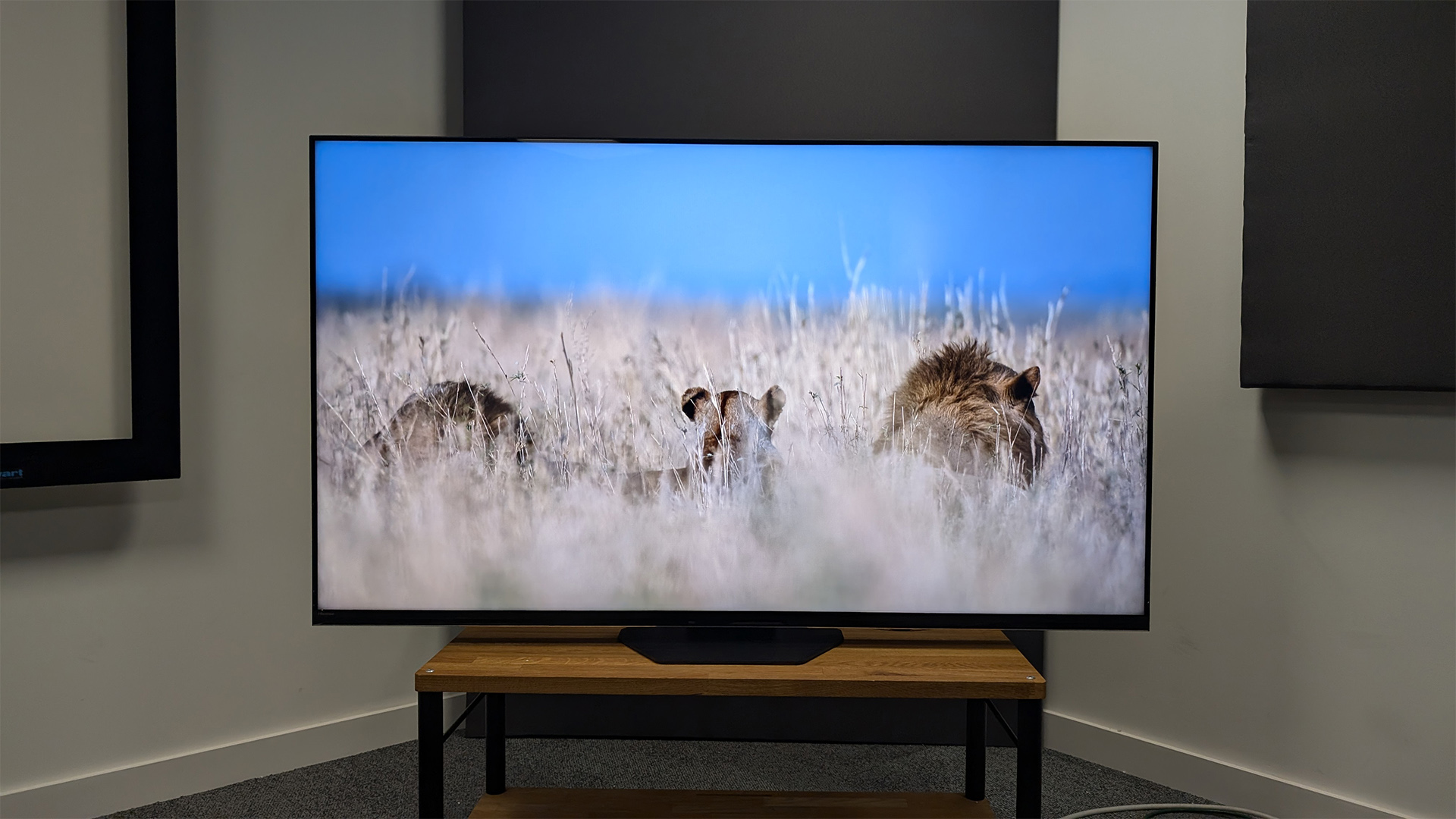
But this doesn’t make the picture bad. Holistically the U8N delivers a balanced image that gets so much right; there’s no hint of oversharpening, whites are controlled and bright scenes full of detail. Despite not matching OLED perfect black levels, dark areas house oodles of shadow detail, with every wrinkle and dirt stain on a sofa bathed in shadow being clearly visible.
Switching to Pan, a test disc we often use to see how a TV handles incredibly bright scenes thanks to its atypical 4000 nits mastering, the U8N maintains its composure in our recommended settings.
Playing an incredibly bright scene where a pirate ship flies into the sunset, the picture shows a wide range of colours and retains plenty of detail in areas that are displayed as pure white in the U8N’s HDR Standard, let alone Vibrant, setting.
The trade off is that the picture lacks the wow effect you get on settings where the TV pushes its peak brightness to its limit, offering significantly brighter peaks than the A80L and any other step-down OLED we’ve tested in the past two years.
For us the trade off in sacrificing this brightness is worth it as, with our recommended settings, the image feels natural and matches the performance of several of the competing, more expensive Mini LED TVs we’ve tested this year.
Running our standard Dune test scene, the picture oozes detail as the ornithopters soar over the desert, with the texture and range of detail in the sand brimming with balanced realism. There’s no hint of ghosting or artefacts on the machines’ buzzing wings, and in the bright desert sun characters’ skin tones look realistic and are sharp enough to make the overall image look nicely three dimensional. But dark areas of the sand and the characters’ clothing colours aren’t as deep or dynamic as those on the A80L.
All-in-all if you are coming from a basic LCD, then the U8N will feel like a night and day upgrade. But if you’re used to OLED, you’ll notice the less deep blacks and paler, cooler colour temperature right away.
Moving to our standard upscaling test, True Grit, the U8N reveals one of its greatest strengths – wonderfully accurate and precise upscaling. True Grit is a tricky test of any TV’s upscaling powers as it’s full of difficult scenes with intensely dark and light sections and an intentionally old-school grainy quality. Common issues we encounter while testing TVs and upscaling the movie from its native 1080p resolution to 4K include noticeable black crush, where details in dark sections are lost and over smoothing. The latter means the movie loses its grain and nostalgic classic Western movie charm.
Here though, the U8N retains shadow detail and composure. Details in the characters’ knitted clothes and quilts look sharper, but remain wonderfully realistic, while the dusty grain effect survives the upscaling process. The end result is an image that retains its 'as the director intended' feel.
This remains the case when we switch to streaming 1080p content on Netflix and Disney Plus, where once again every show we throw at it looks sharper but without losing its sense of realism or character – the contestants of Takeshi's Castle never looked so good.
Sound
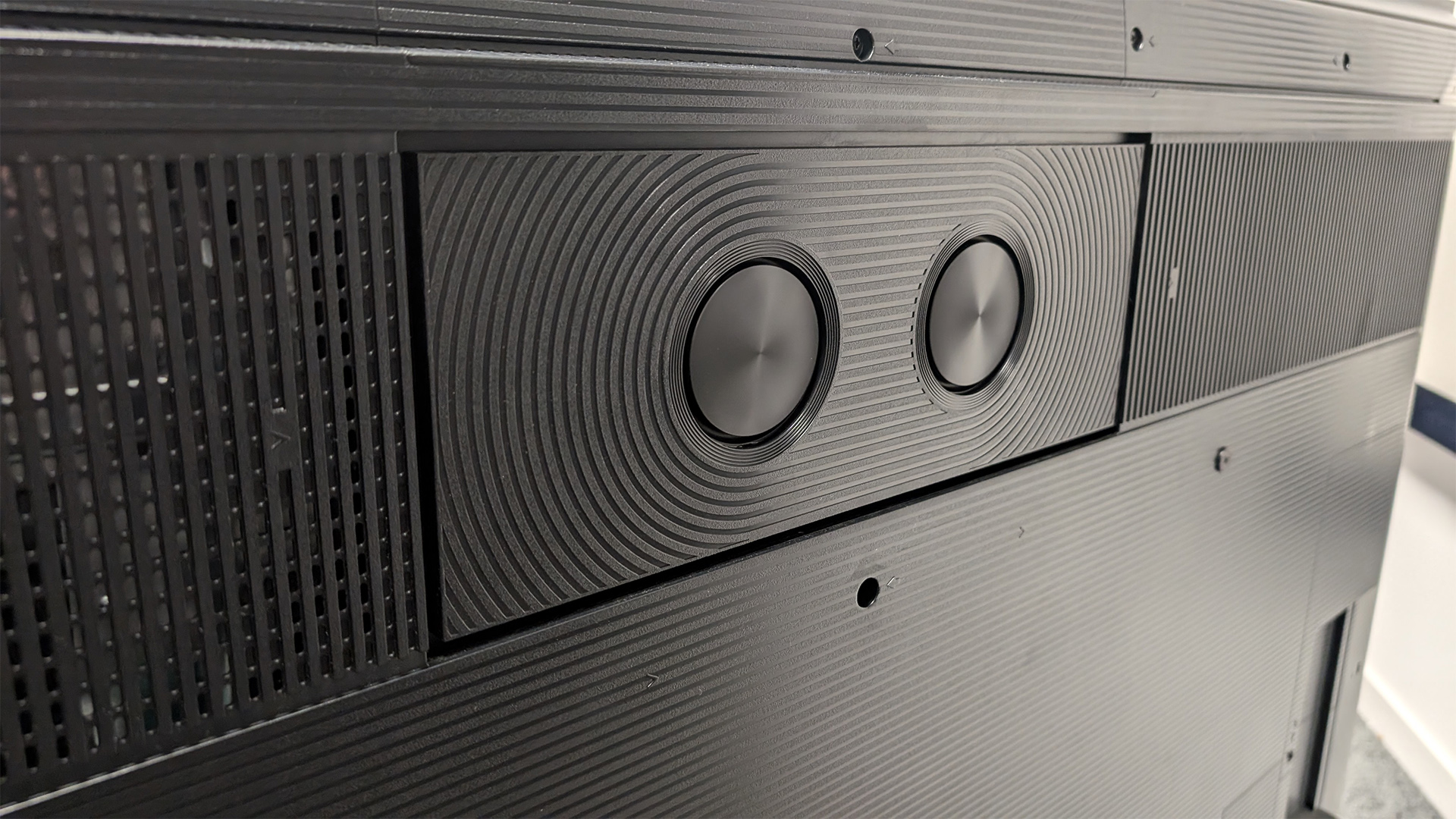
The Hisense U8N’s 2.1.2 in built speaker system is the latest in a long line of TV audio set-ups to deliver merely okay audio that is easily beaten by any moderately capable soundbar.
Playing Netflix shows with the volume below 50 per cent, the system delivers a performance that’s neutral and good enough to not distract from what’s on screen, but is still noticeably flat.
Switching to our standard Blade Runner 2049 scene two stress test, the system delivers solid (by in-built TV speaker standards) levels of low-end heft while retaining a certain level of composure. But the moment the volume is raised above 50 per cent, some minor distortion and speaker rattle creeps in.
Transitioning to the next scene, another tricky test where the main character chats to a hologram rapidly moving around his apartment off screen, results are on a par with rivals, including the Philips OLED809, but nothing special. The U8N delivers a flat performance, with the audio offering little to directionality as the hologram moves around. The dialogue also lacks suitable separation from the rest of the film’s sound to truly draw us in. It’s a safe but uninspiring performance.
Switching to Top Gun: Maverick, the system offers a noticeable effort to do justice to Kenny Loggins’ iconic Danger Zone, but the sound is still flat, and sibilance rears its ugly head when we raise the set’s volume to 60.
This means that if you just want to watch TV at sensible volumes – 50 was more than loud enough for most normal sized environments during our tests – you’ll be just about okay. But if you want an immersive movie or sports watching experience then you will want to invest in a soundbar or speaker package.
Verdict
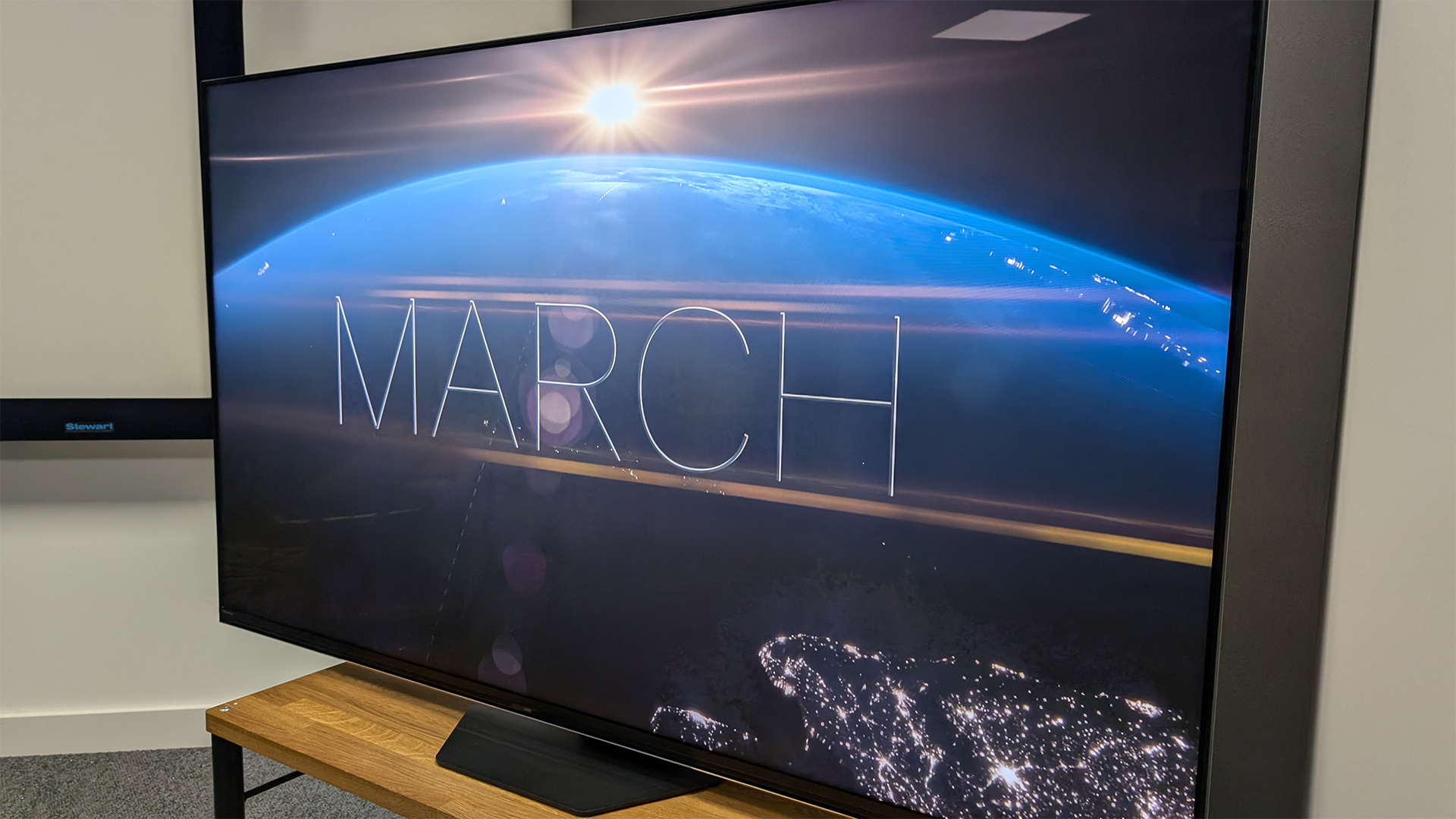
The U8N is a solid performer and very enticing option if you view it in isolation and only compare it to competing Mini LED sets. But thanks to recent price reductions, many step-down OLED TVs are now in the same ballpark. If you can stretch to invest a few hundred more you can grab an LG C4, which offers easier set-up, deeper blacks, pixel level contrast control, an equally good app ecosystem and better gaming features. This means that for now the U8N is a good, but not perfect, option for any premium TV buyer.
SCORES
- Picture 4
- Sound 3
- Features 4
MORE:
Read our review of the Samsung QNS95D
Also consider the LG C4
Read our Philips OLED809 review
Best TVs: flagship OLEDs and affordable flatscreens tried and tested

Alastair is What Hi-Fi?’s editor in chief. He has well over a decade’s experience as a journalist working in both B2C and B2B press. During this time he’s covered everything from the launch of the first Amazon Echo to government cyber security policy. Prior to joining What Hi-Fi? he served as Trusted Reviews’ editor-in-chief. Outside of tech, he has a Masters from King’s College London in Ethics and the Philosophy of Religion, is an enthusiastic, but untalented, guitar player and runs a webcomic in his spare time.
